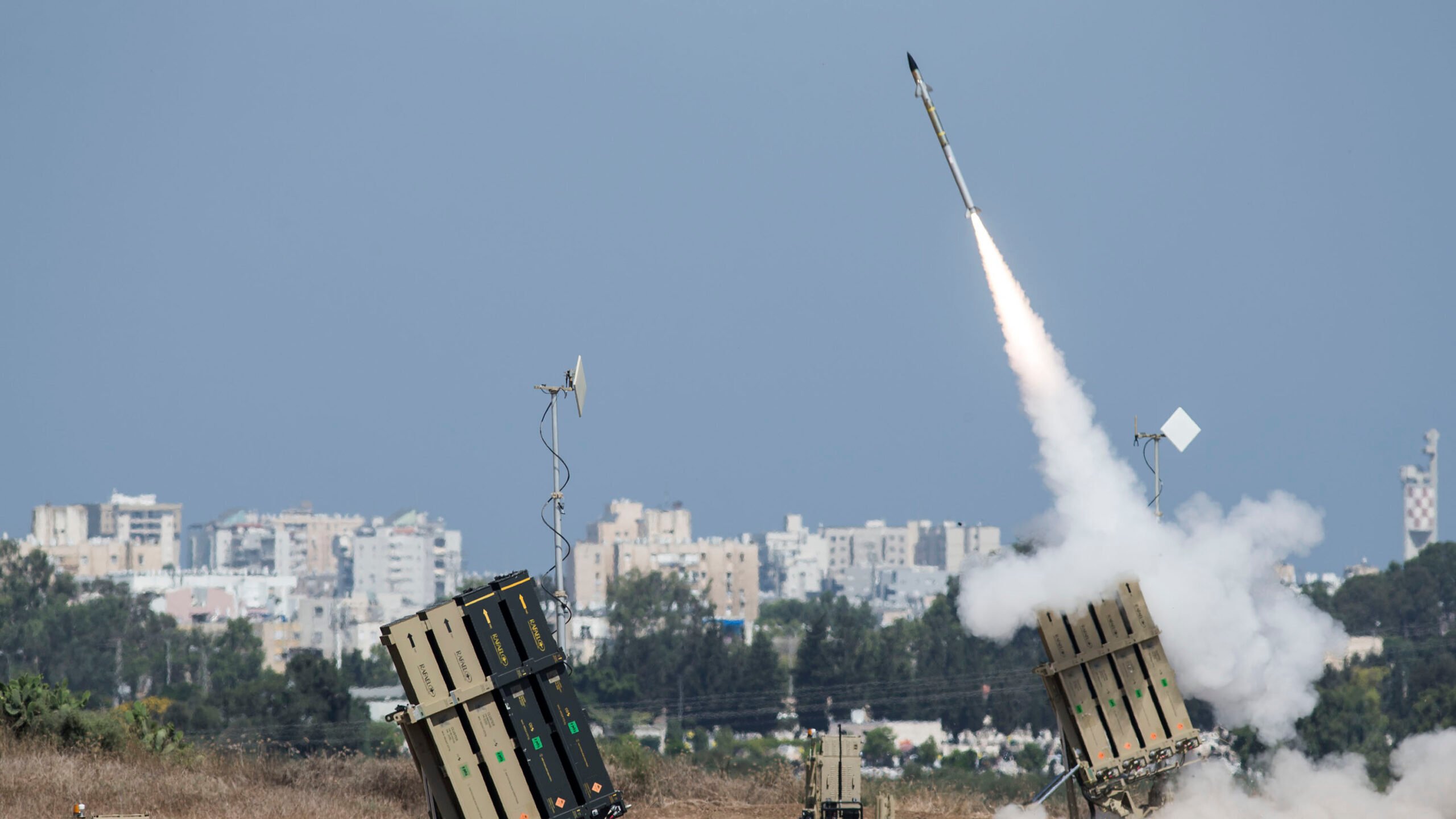
The Iron Dome air-defense system fires to intercept a rocket over the city of Ashdod on July 8, 2014. (Photo by Ilia Yefimovich/Getty Images)
TEL AVIV — Inside the Israeli ministry of defense sits an office known as the Directorate of Defense Research & Development (DDR&D). It’s an office that largely keeps its head down, but has been the birthplace of many advanced, and often-classified, Israeli weapon systems. Among the best-known projects to have been born in this office include the Iron Dome, David’s Sling and Arrow air defense systems — all now a core part of Israel’s defensive posture.
Breaking Defense was recently given access to DDR&D to learn more about future programs. Most of what was shown cannot be discussed publicly at this time, but many of these systems, at first glance, seem more like science fiction than military fact. And many, officials here said, could end up as some form of co-production or development with the US.
Col. Nir Weingold, the head of planning, economics & IT department in DDR&D, told Breaking Defense that it’s no surprise that the three most famous systems to come out of DDR&D did so with financial backing from Washington. The cooperation between the DDR&D and the US defense establishment is across the board and consistent, he said, adding “we cooperate in really all layers of combat-related technologies, but I cannot be specific.”
“The Americans love our solutions for operational requirements and I can mention only few — dealing with the growing threat of armed drones and protecting forces from the enemy that uses tunnels to attack in unexpected places,” he added.
The number of US armed forces delegations that are visiting Israel to see the new ideas, some still on the computer screen and others as prototypes that are tested in military ranges, is the highest ever, per an official. In recent years the IDF has participated in a great number of joint exercises with American forces. IDF sources tell Breaking Defense that after each exercise, the Americans asked the DDR&D for details of locally developed systems that were used in the joint training operation.
“In some cases, this interest resulted in joint ventures between Israeli and American defense companies,” one source said.
Weingold said that DDR&D is now working with some of the local industries on developing systems comprised of different robotic platforms that can operate in harmony in the combat zone. He revealed that ELTA, the electronics subsidiary of Israel Aerospace Industries (IAI), was selected for the full development of such a system.
When pressed on specifics, however, he demurred.
“This system is highly classified,” he said. “What I can say is that the Americans have been briefed about this system and they are very enthusiastic. One of the advantages of this system is its open architecture that enables plug-and-play of different combat tools, but I cannot add to this. What can be said is that the Americans are very interested in this program.”
The following is a short Q&A with Weingold.
BREAKING DEFENSE: How much money is invested by your department in forming ideas for new systems?
Col. Nir Weingold: The relevant numbers here differ from R&D figures as measured in the industry. To give a general idea, I would say the average number for the early stages of R&D is under ₪800 million ($218 million) annually and focuses mainly on research stages and very basic developments [proof of concept]. Later stages including full-scale development are based on different governmentally-funded budgets.
What are the sources of the ideas that, with the help of your department, turn into fully operational systems?
As Israel is continuously involved in combat operations, what we call the “war between wars,” the ideas flow all the time to our teams. The war between wars — meaning the Israeli operations against terror organizations and countries like Iran that try to use neighboring countries like Syria to attack Israel — is a never-ending source for ideas. Each idea is evaluated by our teams. Each of these teams include reserve officers that, after serving in their units, come back to our laboratories with very clear ideas about what is needed today and tomorrow. We deal with all layers of the requested system — technological and operational. In air defense, for example, we look at detection, EW and intercept. This is the uniqueness of the department — we look at every possible angle with focus of what we think will be needed in future combat
But the major enemy is Iran, with highly enriched Uranium and long-range ballistic missiles. Are you also planning what will be needed to deal with this enemy?
Iran is always in focus and has been for years. [The colonel declined to elaborate further on Iran.]
In its history, Israel has suffered from embargos that kept it from importing defense systems that the country needed. In your work, are you taking such an embargo as a future possibility and how do you plan to be ready to supply the tools that the embargo will not allow Israel to buy?
Yes, we take this into account and this gives us the drive to develop efficient technologies that will be used to replace the ones that may be included in a future embargo. We try to be ready to initiate emergency actions with the Israeli defense industries to ensure that the IDF’s combat capabilities will not be hampered if a future embargo is declared by some foreign country.
Boeing buys GKN factory, ending dispute over F-15, F/A-18 parts
Through the deal, Boeing’s litigation with supplier GKN Aerospace will be dropped, and the aerospace giant will take possession of a St. Louis-area factory it used to own.


























